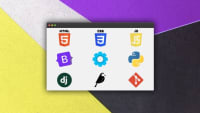Description
This course is all about developing skills related to the full-stack JavaScript development process. This course talks about multiple ways to create UI and UX designs, all on a professional level. It starts by explaining the significance of Node.js and later talks about its event loop and controls the process of asynchronous code. It describes multiple concepts such as developing with TypeScript, Unit testing with Jasmine, API for image processing and more. This course aims to teach the ways to use tools for building an API in a way that is maintainable and scalable.
Topics Covered:
- Backend Development: Know what backend development is and how it can be performed with the help of Node JS.
- Tools: Come across multiple tools which are important, keeping in mind the backend development. Also, learn how they help you write code.
- TypeScript: Know what TypeScript is and understand its significance for application development.
- Jasmine: See how unit testing is done with Jasmine and how it can be used as a Test-Driven Development Framework.
- Building Servers: See how you can build servers with the Express Framework and use middleware for expanded functionality.
- API: Learn how to create an image-processing API which takes advantage of all the tools. Also, learn how these APIs resize and save images.
- And Many More Topics..
Who Will Benefit?
- Backend Developers: All individuals who want to learn modern web development with the help of Node.js and TypeScript.
- Full-Stack Developers: Developers who want to improve their backend-development skills and learn how to deploy APIs.
- Students Of Computer Science: Students who want to practically understand the backend workflow, tools and framework.
Why Choose This Course?
As you choose this course, you will come across all the important concepts related to full-stack development. It will equip you with all the skills needed while building a web application with modern architecture and technology. This course benefits you by letting you explore the software development testing paradigm. You will also learn about building a server with the Express framework and understand how APIs are architected and created. By the end of this course, you will be able to create an API for image processing which resizes and saves images.









